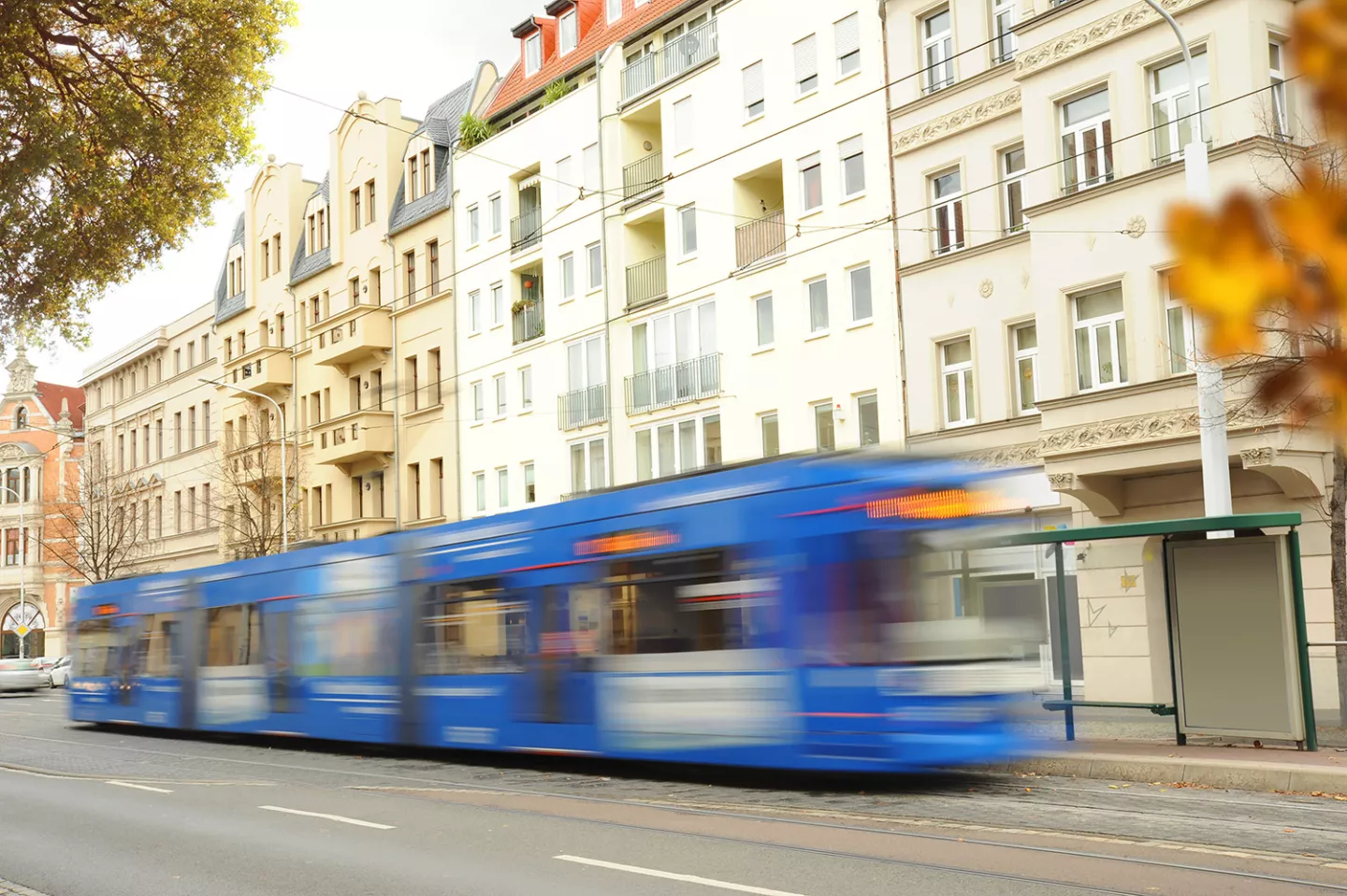Particularly in summer when temperatures are high, trams can make a lot of noise in cities, which can be very annoying for residents. Noise is generally caused by the contact between the metal of the wheels and the metal of the rails. In curves in particular, the noise can increase to a squealing noise, as the wheel and rail become entangled at these points - the tighter the curve radius, the stronger the effect. Higher temperatures play an additional role. The type of train, the surface conditions and the rail system are also relevant for noise development. In order to find out which influences have a particular impact in each case, a model project was initiated by a customer to correlate vibration behaviour with noise development.
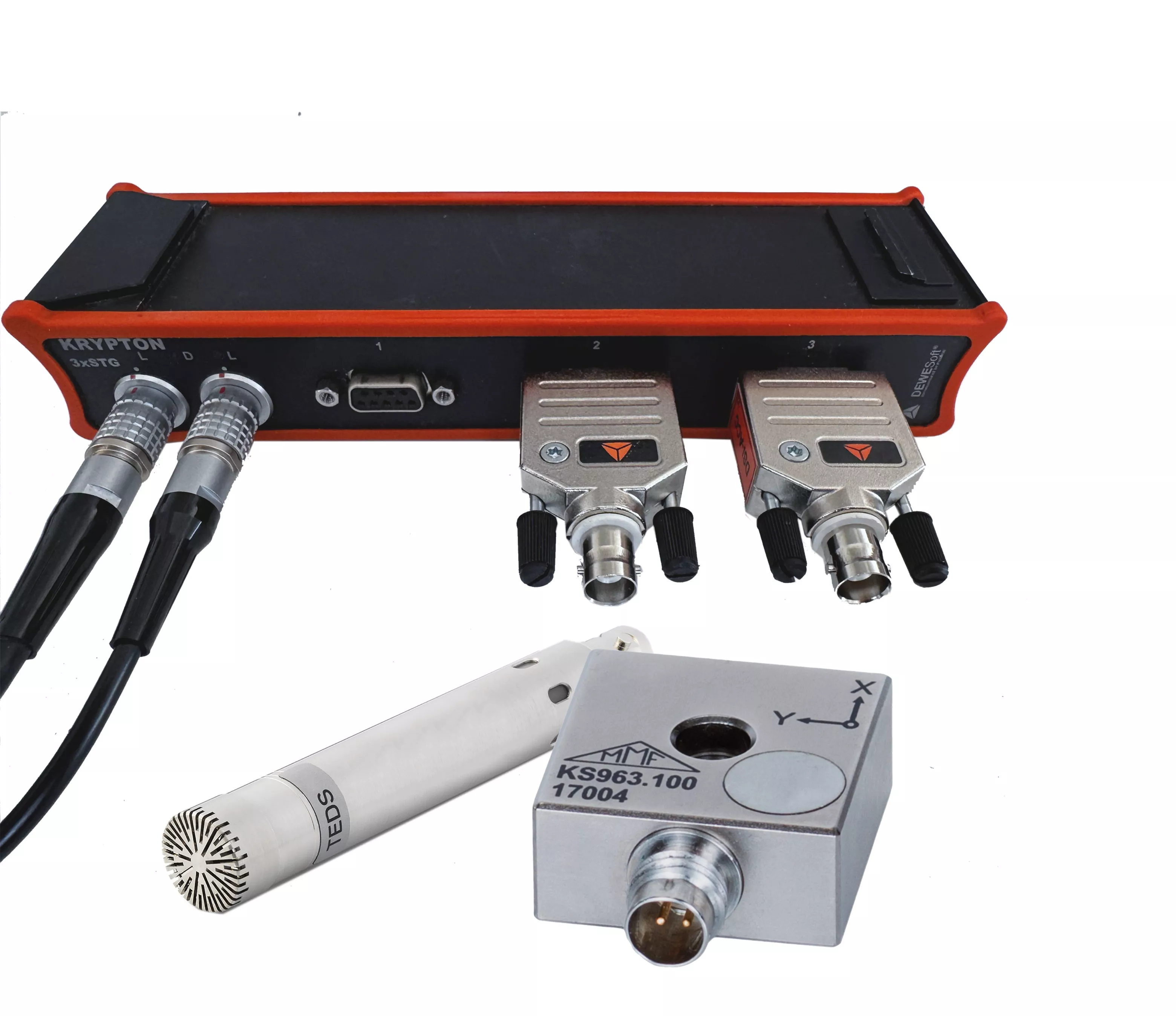
Measuring system with triaxial vibration transducer and microphone
We supplied a four-channel measuring system that records the vibrations in the X/Y/Z axis via a triaxial vibration transducer and the noise via a directional microphone. The measurement task consists of mapping different measurement signals - three times vibration and once sound - in a time-synchronised manner in a measurement system and later transferring this data to a PC system. We have suitable vibration transducers in our portfolio for vibration measurement, while we had to think outside the box when it came to audio recording and merging it into one system. We found what we were looking for in the software company Dewesoft, which specialises in data acquisition systems, with the so-called Krypto system. This is a small, handy data acquisition module with four input channels that is insensitive to environmental influences. A directional microphone specially designed for this sound spectrum is used for sound recording.
Customised pre-configuration
The crypto module was pre-configured accordingly by our measurement specialists and set to the three vibration channels and the microphone value so that the customer can use the module straight away. The system also provides its own time axis, which can be synchronised from within the program. The data is sent to a PC via EtherCat. With the help of the system, it is possible to see when a strong noise development occurs and how this correlates with the vibration amplitudes. A ready-to-use plug-and-play system was supplied, which can be transported compactly from one measuring point to another in a case.
The vibration sensor itself is a compact miniature sensor, suitable for modal and structural analysis (e.g. for determining natural frequencies), which is TEDS-capable. A digital memory built into the sensor not only transmits its type and serial number to the measuring device, but also its sensitivities, so that Krypto itself recognises which type of sensor is connected and can adopt this configuration immediately. A high resolution was also required; the measuring range here is 0 to 60g. As the sensor can potentially be exposed to the elements, high IP protection is also important, in this case IP64. It is also characterised by low noise behaviour and low temperature coefficient.
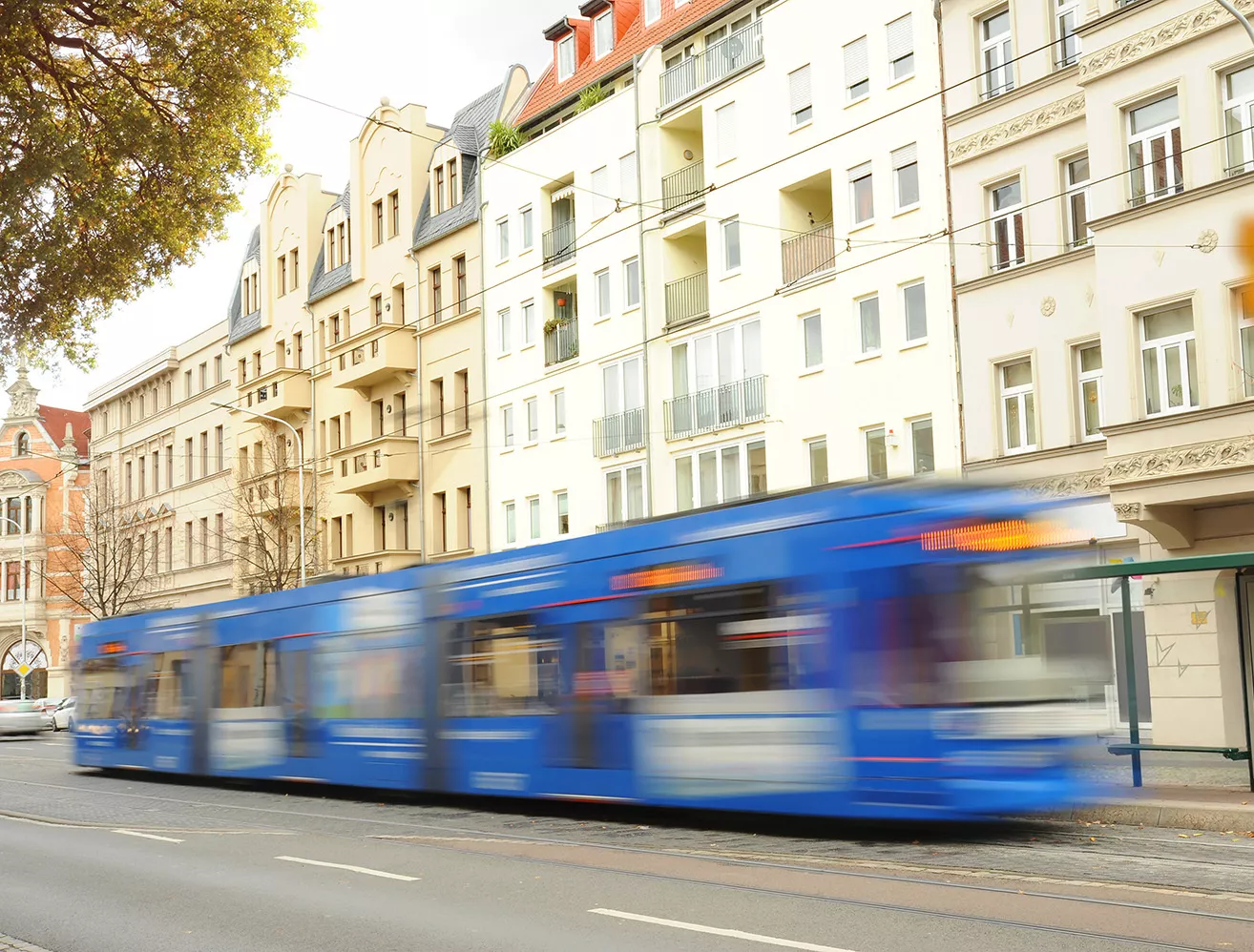
Test phase at the depot
The measuring system will initially be used in a test phase at a municipal depot, which combines various influencing factors: different types of railway, a special track bed structure that is susceptible to noise, as well as narrow rail radii and rail run-outs. The microphone and vibration sensor are installed in the rail web via a separate bracket. The cabling runs to a fuse box where all the electronics, including the crypto device, are connected. A laptop is also connected directly to Krypto in order to record the data on site - 24 hours a day, 7 days a week - which is later analysed separately. Temperature and weather are also logged, as well as the different vehicle types and their respective passing times. The aim is to create an interface in future that can be used to transfer the data into a kind of dashboard in real time.
Once the pilot phase is complete, the measurement system will be used at central traffic junctions. The series of measurements taken so far have already revealed initial findings: Trams with low access, i.e. which are flatter than high-floor trams, generate more noise. One of the reasons for this is the axle suspensions, which are individually suspended and therefore allow more vibrations. The axles of high-floor trams, on the other hand, are rigid and are less likely to vibrate.
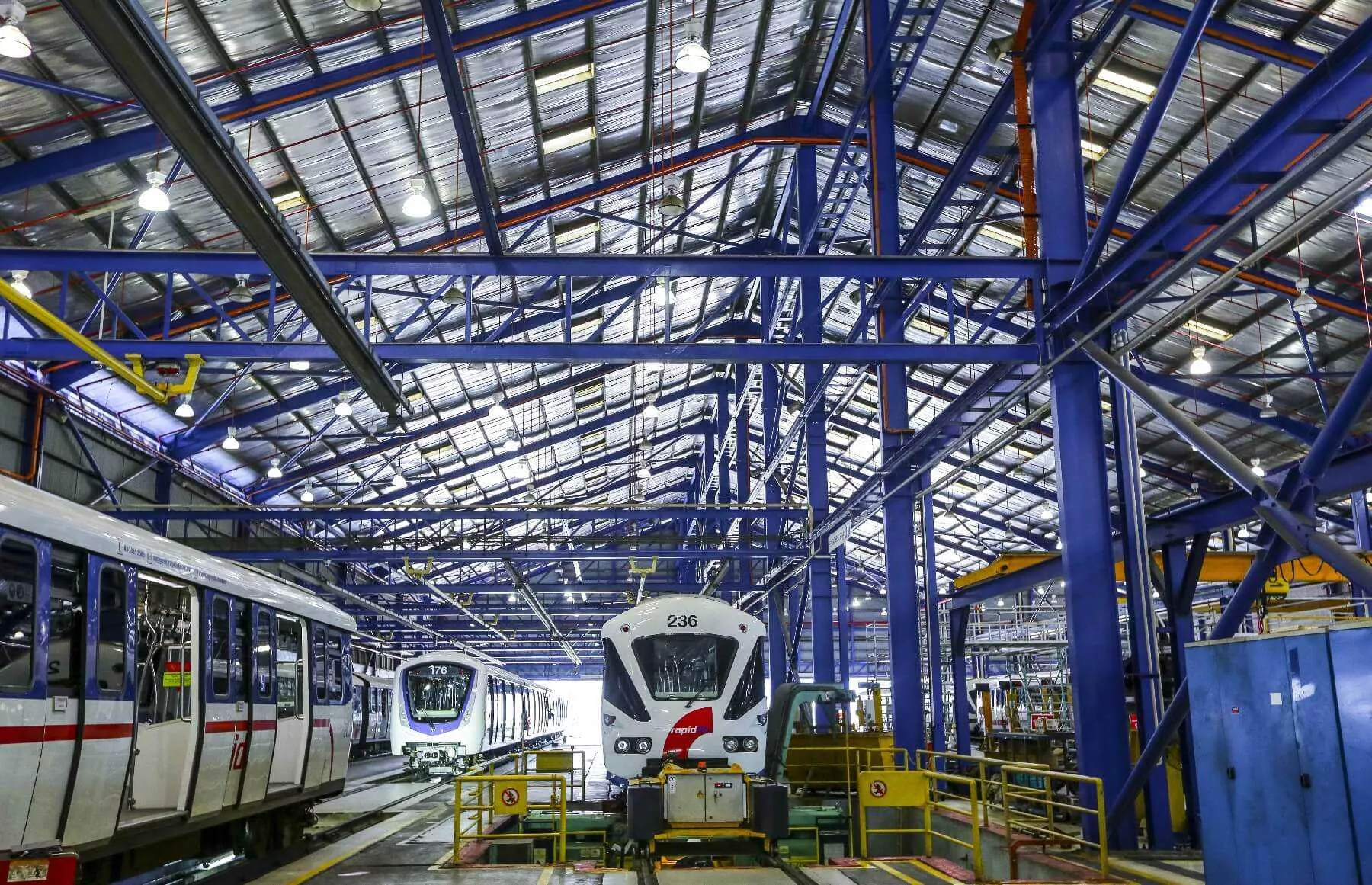
There are numerous measures to reduce noise and they always depend on the situation on site. These can range from substructure treatment, e.g. with rigid concrete slabs that vibrate less, to modified rail bearings with various damping systems. In any case, the measurement data should help to optimise maintenance processes, e.g. to use the specially developed lubrication systems even more specifically in order to always lubricate rails in such a way that rail noise is reduced.
Overall, good maintenance practice is important, because a healthy track network that is permanently maintained automatically reduces noise levels.
Added value for maintenance
For the customer, the measurement project represents a further step towards a higher degree of digitalisation. A dashboard customised to the customer's needs offers great potential for assessing individual sections of track. Although the cost of recording measurement data is high, the added value of improved maintenance practice justifies the measures. Track systems can be developed even further and noise can be reduced so that residents are less affected.
Accelerometer
Similar accelerometers for the railway industry
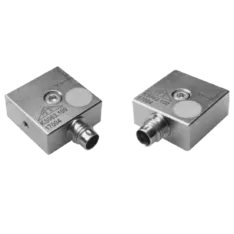
KS963B10/B100 Triaxial Accelerometers
- Triaxial
- Through hole for easy attachment and axis adjustment
- Suitable for small and light measuring objects
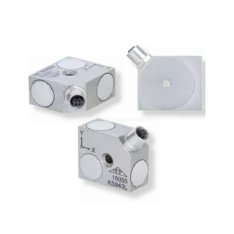
KS943B10/B100, KS943L Triaxial Accelerometers
- Triaxial
- Through hole for easy attachment and axis adjustment
- Suitable for small and light measuring objects
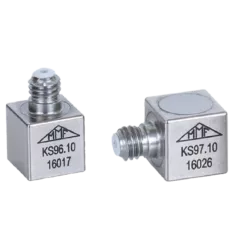
KS96B10/B100, KS97B10/B100 Miniature Accelerometers
- Measuring range: ±500 ±60 g
- High upper limit frequency
- For modal and structural analysis

